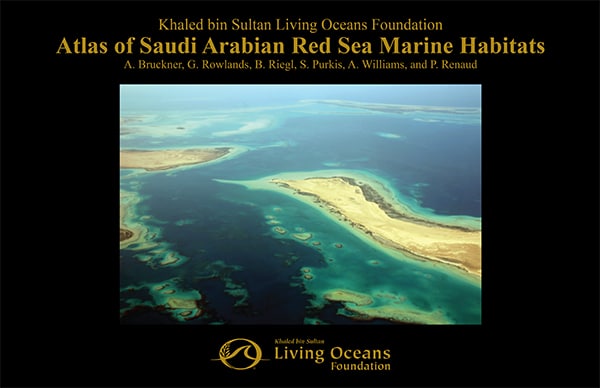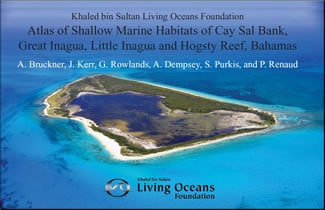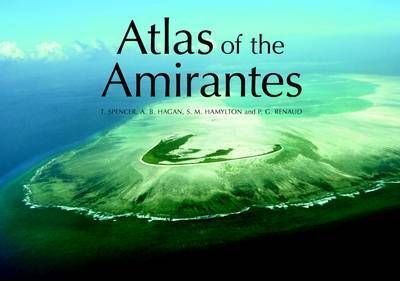Publications
Research to Support Marine Conservation
Publications
Research to Support Marine Conservation

PUBLICATIONS
Research That Drives Real-World Impact
The Khaled bin Sultan Living Oceans Foundation has conducted extensive marine research, contributing to hundreds of peer-reviewed scientific publications and producing a wealth of reports, maps, and management resources. Our research provides critical insights into the health and resiliency of coral reefs worldwide, supporting conservation efforts, policy decisions, and sustainable management of coastal marine ecosystems.
In addition to peer-reviewed studies, we have published reports summarizing our scientific findings in key locations, atlases mapping coral reef and coastal marine habitats, and resources designed to assist marine managers in safeguarding their reefs. These publications have been shared with governments, conservation organizations, and local communities to help guide marine conservation initiatives.

Marine Atlases
Our atlases of coral reefs and other shallow-water marine habitats are a showcase of our work in a region, containing comprehensive color maps of the seafloor along with a summary of our scientific findings on the health and resiliency of their marine ecosystems.
Atlases are a final product of our scientific research, the culmination of all of our coral reef surveys and mapping activities, available in a form governments can use to make decisions about how they use their coastal lands and waters. To date, the Khaled bin Sultan Living Oceans Foundation has published three Atlases, the Red Sea Atlas, the Bahamas Atlas, and the Atlas of the Amirantes:
Red Sea Atlas
Over a four-year period, the Living Oceans Foundation led a massive marine habitat research mission in the Red Sea. The results of our surveys are published in the Atlas of Saudi Arabian Red Sea Marine Habitats, the first-ever atlas covering all of Saudi Arabia’s coral reef habitats in the Red Sea. It is available for download in both English and Arabic.
The Bahamas Atlas
The Atlas of Shallow Marine Habitats of Cay Sal Bank, Great Inagua, Little Inagua, and Hogsty Reef, Bahamas, is the result of months of underwater research to survey and map the seafloor. The Bahamas Atlas combines advanced satellite imagery, aerial photography, and data from hundreds of research dives into the first high-resolution coral reef ecosystem maps of many Bahamian reefs.
The Atlas of the Amirantes
In 2005, the Living Oceans Foundation traveled to the Seychelles, a 115-island archipelago in the Indian Ocean, to study the impact of an El Nino Southern Oscillation (ENSO) ocean warming event on their coral reefs. The Atlas of the Amirantes contains high-resolution benthic habitat maps that were created from this research project for the purpose of aiding the Seychelles government in marine conservation efforts and management plans, the result of months of underwater research to survey and map the seafloor.
Scientific Publications
We are committed to making our research accessible to those working to protect the ocean. Scroll down to browse our publications by location and/or research topic to explore our findings. If you need additional information, you can request data to support your marine research and conservation efforts.
Bruckner, A. (2010). Western Atlantic Coral Identification Field Guide. Woods Lithographics, 22.
Bruckner, A. (2010). Western Atlantic Health and Resilience Cards. Woods Lithographics, 12.
Woodley, C., Bruckner, A., McLenon, A., Higgins, J., Galloway, S., & Nicholson, J. (2008). Field Manual for Investigating Coral Disease Outbreaks. Coral Disease and Health Consortium. NOAA Tech Memo. NOS NNCOS 80 and CRCP 6, National Oceanic and Atmospheric Administration, Silver Spring, MD, 85.
Raymundo, L., Couch, C., Bruckner, A., Harvell, C., Work, T., Weil, E., … Sato, Y. (2008). Coral Disease Handbook: Guidelines for Assessment, Monitoring, and Management. CRTR, Australia, 131.
That sunny confidence turned out to be totally unfounded. In 1980, Hurricane Allen, a category five storm, struck and turned much of the reef into a rubble ground. However, reefs routinely get hit...



